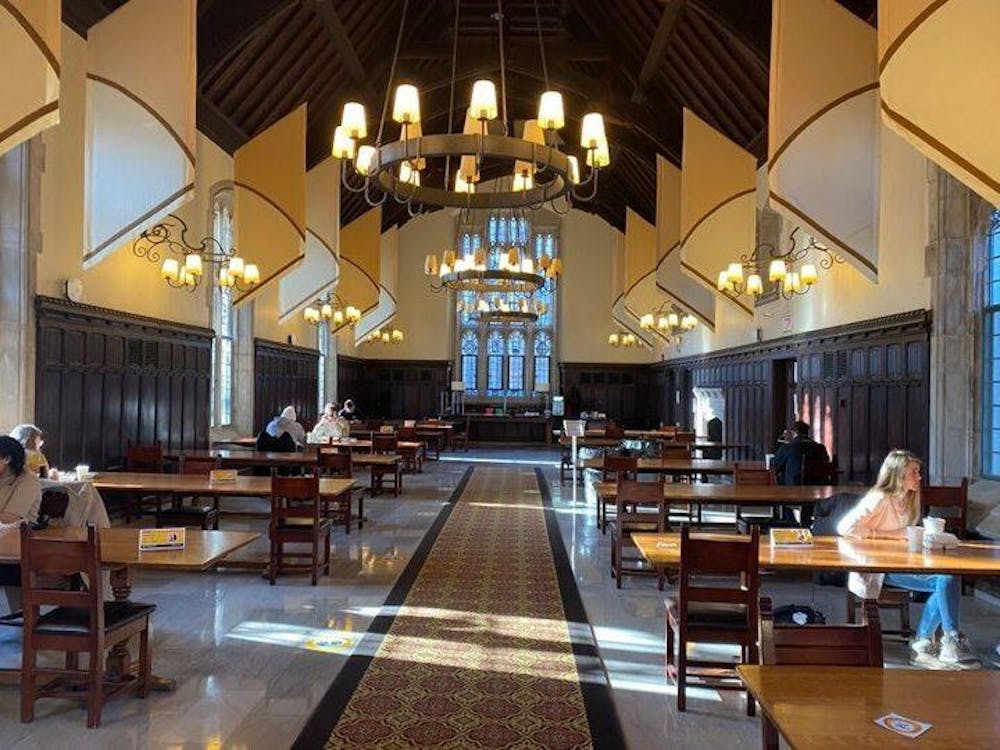This May marks the 40th anniversary of Asian Pacific American Heritage Month. It is our time to focus on not only the successes of Asian Americans but also the overlooked barriers they continue to face. Asian-American women face unique challenges. They are victims of both glass and bamboo ceilings — invisible barriers that prevent women and Asian Americans, respectively, from advancing in their careers. While it is tempting to lump Asian American women in with either all women or all Asian Americans, this approach is shortsighted. Instead, we need to consider how the stereotype of Asian femininity compounds with the “model minority” myth, the stereotype that all Asian Americans are hardworking and successful without requiring help. The complex interplay of these stereotypes generates unreasonable expectations of extreme compliance and unquestioning service for Asian-American women. And it is these expectations that can severely restrict them from moving forward.
Let’s start with the bamboo ceiling. Research at the University of Wisconsin-Madison has shown that the “model minority” image can discourage Asian-American students from seeking help, socially isolating them and in some cases causing them to do worse academically. On top of that, sociologist Rosaline Chou has found that Asian Americans are often pressured to conceal incidents of racism to avoid damaging their “model minority” reputation. When the standard is to be an obedient, industrious worker, who would want to speak up and create problems?
In addition to the bamboo ceiling, Asian-American women are constrained by the glass ceiling. Psychology studies have consistently documented the invisible barriers women face in the workplace, from the greater backlash incurred by powerful women who talk more to the relatively small number of colloquium talks delivered by women at top universities, compared to talks by their male counterparts. While strides have certainly been made in female empowerment, can we ever seriously disentangle ourselves from the “Sleeping Beauty” ideal — one that values the physical characteristics of women more than their intellect or abilities — so deeply ingrained in our society?
So, if Asian Americans are expected to be diligent and uncomplaining, and women are expected to be modest and communal, what does that mean for Asian-American women? Since Asian identity is associated with femininity, Asian-American women experience a unique “ultra-femininity.” As attorney Peggy Li puts it, “The model minority traits of passivity and submissiveness are reinforced, intensified, and gendered by the stereotype of Asian American women as … reserved, humble, and demure.” The intersection of their race and gender identities makes them vulnerable to intersectional invisibility, the phenomenon in which people with multiple subordinate identities face discrimination because they are are regarded as non-prototypical members of the groups they belong to.
The facts clearly illuminate this invisibility. A survey conducted by the National Science Foundation found that the percentage of doctoral scientists and engineers employed in universities who are tenured is lowest for Asian-American women (20.6 percent), compared to Black (32.1 percent), Hispanic (30 percent), and White (40.2 percent) women. Moreover, in a study led by Catalyst, Asian-American women were found to be most likely to attain a graduate education, but least likely to hold a position within three levels of CEO or have supervisory responsibilities compared to Black and Hispanic women.
These hard facts shatter the illusion that Asian-American women are thriving in abundant success and do not need help advancing their careers. This is especially salient considering the numerous diversity initiatives out there to help Black and Hispanic women in the workplace, while leaving out Asian-American women. Asian-American women are excluded from such diversity initiatives since they are not thought of as marginalized, a stereotype which ignores the racialized sexism leveled against them. When will we realize that Asian-American women face an insidious, distinct kind of discrimination that is not the same as that faced by either women or Asian-American men?
There is no better time than now. We can start by distancing ourselves from the harmful “model minority” image. Instead, let’s adopt a holistic approach to examine and truly understand the discrimination Asian-American women are uniquely subject to. By putting up posters, initiating campaigns, reaching out to social media platforms, and even just having conversations with our family and friends, we can change the public perception of Asian-American women for the better.
Spring is a time of new beginnings — when every day is ripe with opportunity and growth. This May, with the 40th anniversary of Asian Pacific American Heritage Month, let us not only celebrate the culture and achievements of Asian Americans, but also acknowledge our shortcomings and work together towards smashing this ceiling of bamboo and glass that prevents Asian-American women from reaching their full potential.
Lillian Xu is a sophomore in molecular biology from Crozet, Va. She can be reached at lillianxu@princeton.edu.
This month, the University observes Asian Pacific American Heritage Month. If you would like contribute to this month-long conversation about Asian-American and Pacific-American culture, please email opinion@dailyprincetonian.com.









